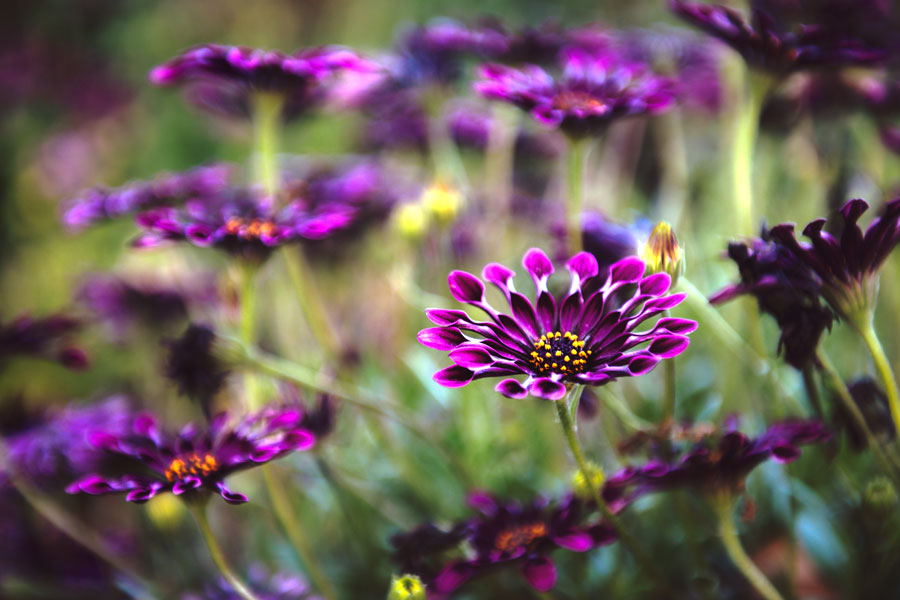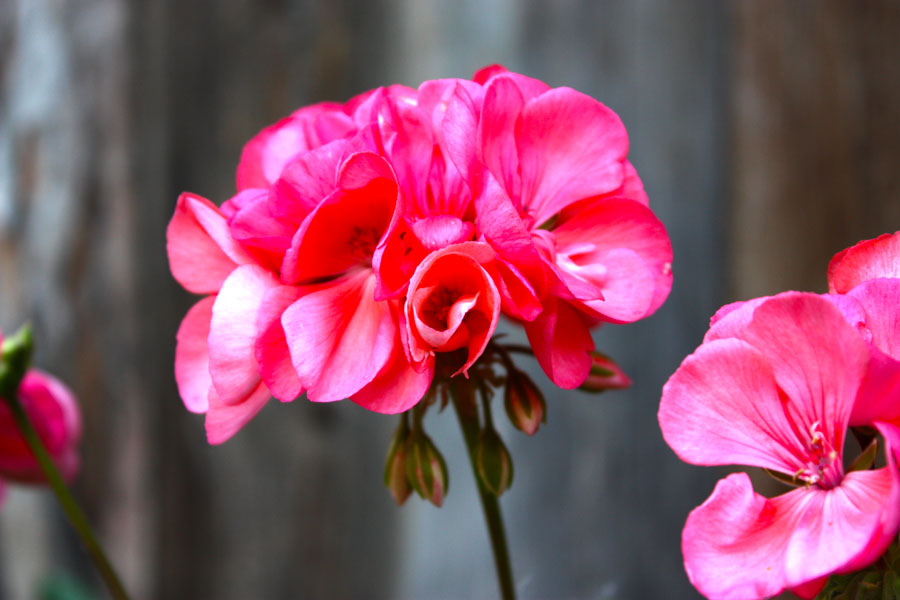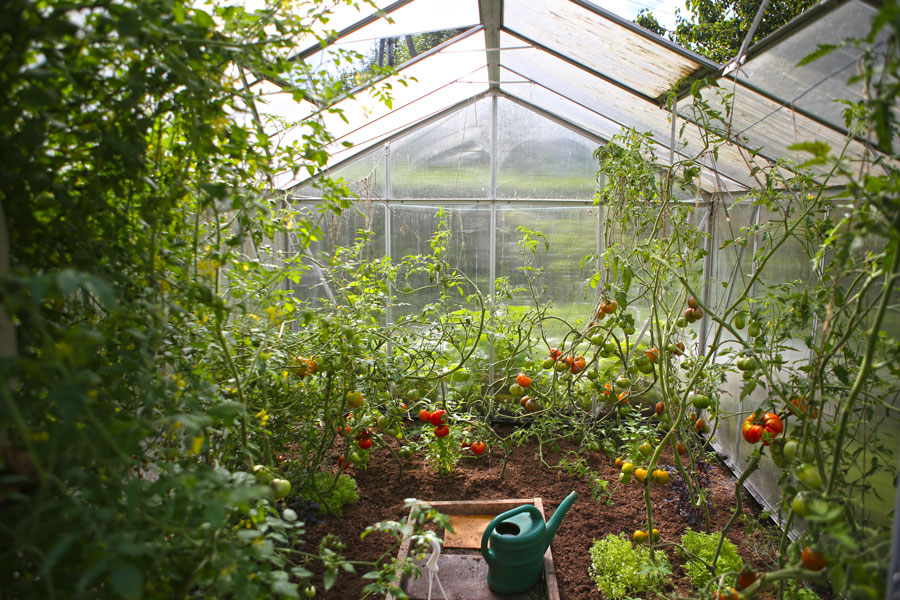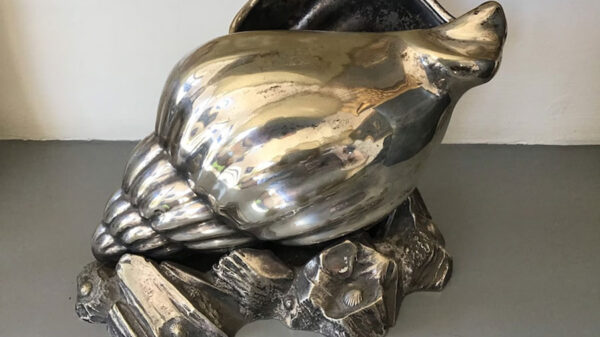As you throw back the curtains and gaze through the window you quickly realise that spring is definitely here, the grass needs cutting, borders need weeding and those who grow vegetables are frantically sowing and preparing plants for the home or allotment. May is the month that really tests your stamina but don’t give up, it may seem daunting but believe me you will soon catch up and find time to relax and enjoy your garden.
When faced with what looks like an impossible task then the best thing to do is put the kettle on and make a list of the jobs that need doing and ideally in the order they need doing. Pick a couple of easy ones like mowing the lawn, as this can give almost immediate results and will build your confidence to tackle the rest.

Herbaceous perennials are plants that die down in winter and regrow each year producing lots of new growth before flowering. Stopping them flopping all over the place is a challenge and installing supports early will ensure they don’t develop twisted wiggly stems or worse still, break on the occasional windy day. There are so many different types of plant support you can use and I have tried most over the years. Everything from upturned old hanging baskets to tubes made from wire fencing mesh, held in position with garden canes, they are soon disguised as the foliage grows through them. Getting this job done when the plants are only 10 – 15cm ( 4 to 6 inches) high means you can forget about them for a little while. I normally sprinkle a little general fertiliser around the plant after I have put in the supports, so that’s two jobs done at the same time.
There is a technique called the ‘Chelsea chop’ which involves cutting back some of the later flowering perennials in order to delay their flowering and stop them growing too leggy. It is done towards the end of May and involves either cutting the whole plant back by about half or selecting half of the stems and cutting them back by half. This means that the ones you leave will flower earlier thereby extending the flowering season. Plants to try this on include aster, rudbeckia, phlox, campanula, nepeta and helenium, there are many others you can try it on too.
I sow our tomatoes rather than buying plants simply because I like to try some unusual cultivars which are not available as plants. I don’t sow them until the middle of March as this means that by the time they need space in the greenhouse I can keep the frost at bay by lining my greenhouse with horticultural fleece. By mid May I am ready to transfer them into their final pots. You can grow them directly in the greenhouse soil but I find growing in containers much easier and if the plants become diseased I can remove the plants, pots and compost and disinfect the whole greenhouse. There are various methods of container growing but I use a large grow bag, with ring pots (pots with no bottom). I plant three to a grow bag, carefully cut a cross in the top of the bag, lift the flaps and carefully push the ring pot an inch or so into the compost pulling the flaps up either side of the pot. Once completed I then turn my attention to the supports. I have always used bamboo canes but most commercial growers just tie a piece of twine loosely to the bottom of the plant and up to a suitable part of the greenhouse frame. As the plant grows, carefully twist the plant around the twine like a spiral.

As many plants are producing new fresh growth it is an ideal time to take a few softwood cuttings, from shrubs like cotoneaster, fuchsia and hydrangea, perennials such as penstemon, osteospermum, and pelargonium. Gather the plant material early in the day when the plant is not under stress. Choose strong health shoots about 10cm (4 inches) long cutting just above a leaf joint. Place them in a polythene bag with a little water to stop them drying out. Fill a small pot with a general purpose compost to which you have added horticultural grit or washed river sand, at the ratio of half compost to half gravel or sand. Fill the pot to the top them tap the pot on bench to settle the compost down. Prepare the plant material by cutting just below a leaf joint, then remove all the leaves apart from the bud at the top and two pairs of leaves. Dip the cutting into a rooting gel or powder and insert around the edge of the pot up to about half it’s depth. Water and place in a resealable polythene bag. Keep in a warm place but out of direct sunlight, you should expect them to have rooted in about two to three weeks.
Happy gardening, Martin.
Next month, (crops to direct sow this month, keep on top of sweet peas and protect your soft fruit.)
Top Tip –
Keeping Greenhouse Whitefly At Bay
I don’t like using chemicals in the garden and try wherever possible to find a more environmentally friendly way of solving pest and disease problems.
Whitefly can be a problem in the greenhouse and are especially attracted to tomatoes, so I have used a tried and tested way of eliminating them from the greenhouse by using a process called companion planting. This is where you grow a plant alongside another which deters the pest, they can be quite effective especially in the confines of the greenhouse.

About a week after sowing my tomatoes I sow a small pot of French marigolds, no particular cultivar, and often a different one each year just to give a different colour in my greenhouse. I think French marigolds have a slightly stronger smell than African ones, but you could try either.
Marigolds germinate quite easily and will be ready to move into small pots within three to four weeks. Once the roots fill the pots I move them into the final container which is usually three plants to a 3 litre pot. I usually have six pots for my twelve foot greenhouse, and place them just in front of the grow-bag. I feed them with liquid tomato fertiliser every second feed that I give the tomatoes. As you would expect they provide a striking display and I have to say since I have been growing them alongside my tomatoes I haven’t had a whitefly in the greenhouse.
If you don’t have time to sow seed then nip along to your local garden centre or nursery and pick up a multipack from the bedding plant section and pot them into the final containers as explained above.
Oh and yes, I did have a small problem with whitefly before I started growing marigolds!







